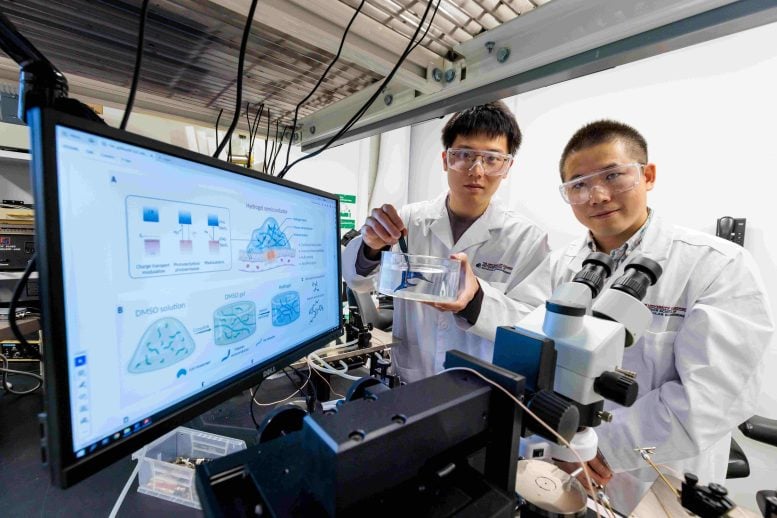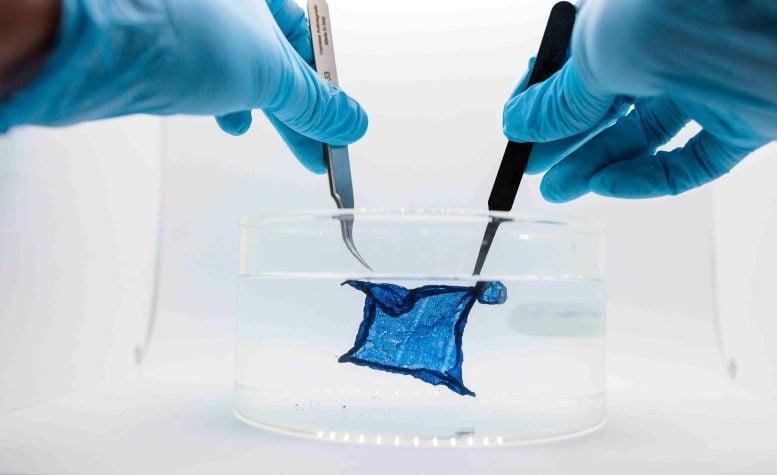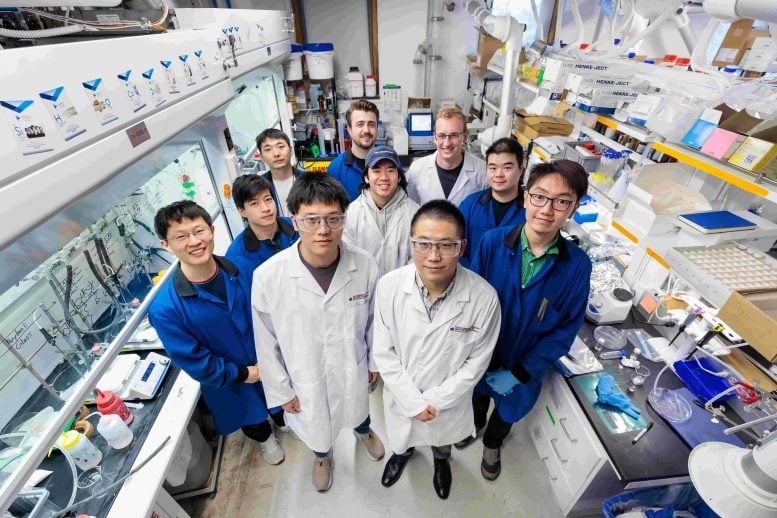
A new hydrogel semiconductor from the University of Chicago offers a groundbreaking solution for bioelectronics, blending tissue-like properties with high electronic functionality, enhancing medical device integration and effectiveness.
The perfect material for interfacing electronics with living tissue is soft, stretchable, and as water-loving as the tissue itself, making hydrogels an ideal choice. In contrast, semiconductors, the key materials for bioelectronics such as pacemakers, biosensors, and drug delivery devices, are rigid, brittle, and hydrophobic, making them impossible to dissolve in the way hydrogels have traditionally been built.
Breakthrough in Bioelectronics
In a new study published in Science, scientists from the University of Chicago’s Pritzker School of Molecular Engineering have overcome this long-standing barrier by innovating the way hydrogels are created to build a powerful semiconductor in hydrogel form. Led by Asst. Prof. Sihong Wang’s research group, the result is a bluish gel that undulates in water like a jellyfish yet maintains the immense semiconductive ability required to transmit information between living tissue and electronic devices.

Properties and Applications of the New Material
The material demonstrated tissue-level moduli as soft as 81 kPa, stretchability of 150% strain, and charge-carrier mobility up to 1.4 cm2 V-1 s-1. This means their material—both semiconductor and hydrogel at the same time—ticks all the boxes for an ideal bioelectronic interface.
“When making implantable bioelectronic devices, one challenge you must address is to make a device with tissue-like mechanical properties,” said Yahao Dai, the first author of the new paper. “That way, when it gets directly interfaced with the tissue, they can deform together and also form a very intimate bio-interface.”

Although the paper mainly focused on the challenges facing implanted medical devices such as biochemical sensors and pacemakers, Dai said the material also has many potential non-surgical applications, like better readings of the skin or improved care for wounds.
“It has very soft mechanical properties and a large degree of hydration similar to living tissue,” said UChicago PME Asst. Prof. Sihong Wang. “Hydrogel is also very porous, so it allows the efficient diffusion transport of different kinds of nutrition and chemicals. All these traits combine to make hydrogel probably the most useful material for tissue engineering and drug delivery.”
Innovative Production Technique
The typical way of making a hydrogel is to take a material, dissolve it in water, and add the gelation chemicals to puff the new liquid into a gel form. Some materials simply dissolve in water, and others require researchers to tinker and chemically modify the process, but the core mechanism is the same: No water, no hydrogel.
Semiconductors, however, don’t normally dissolve in water. Rather than find new, time-consuming means of trying to force the process, the UChicago PME team re-examined the question.
“We started to think, ‘Okay, let’s change our perspective,’ and we came up with a solvent exchange process,” Dai said.
Instead of dissolving the semiconductors in water, they dissolved them in an organic solvent that is miscible with water. They then prepared a gel from the dissolved semiconductors and hydrogel precursors. Their gel initially was an organogel, not a hydrogel.
“To eventually turn it into a hydrogel, we then immersed the whole material system into the water to let the organic solvent dissolve out and let the water come in,” Dai said.
An important benefit of such a solvent-exchange-based method is its broad applicability to different types of polymer semiconductors with different functions.

Combining Semiconductor and Hydrogel Benefits
The hydrogel semiconductor, which the team has patented and is commercializing through UChicago’s Polsky Center for Entrepreneurship and Innovation, is not merging a semiconductor with a hydrogel. It’s one material that is both semiconductor and hydrogel at the same time.
“It’s just one piece that has both semiconducting properties and hydrogel design, meaning that this whole piece is just like any other hydrogel,” Wang said.
Unlike any other hydrogel, however, the new material actually improved biological functions in two areas, creating better results than either hydrogel or semiconductor could accomplish on their own.
First, having a very soft material bond directly with tissue reduces the immune responses and inflammation typically triggered when a medical device is implanted.
Second, because hydrogels are so porous, the new material enables elevated biosensing response and stronger photo-modulation effects. With biomolecules being able to diffuse into the film to have volumetric interactions, the interaction sites for biomarkers-under-detection are significantly increased, which gives rise to higher sensitivity. Besides sensing, the responses to light for therapeutic functions at tissue surfaces also increased from the more efficient transport of redox-active species. This benefits functions such as light-operated pacemakers or wound dressing that can be more efficiently heated with a flick of light to help speed healing.
“It’s a ‘one plus one is greater than two’ kind of combination,” Wang joked.
Reference: “Soft hydrogel semiconductors with augmented biointeractive functions” by Yahao Dai, Shinya Wai, Pengju Li, Naisong Shan, Zhiqiang Cao, Yang Li, Yunfei Wang, Youdi Liu, Wei Liu, Kan Tang, Yuzi Liu, Muchuan Hua, Songsong Li, Nan Li, Shivani Chatterji, H. Christopher Fry, Sean Lee, Cheng Zhang, Max Weires, Sean Sutyak, Jiuyun Shi, Chenhui Zhu, Jie Xu, Xiaodan Gu, Bozhi Tian and Sihong Wang, 24 October 2024, Science.
DOI: 10.1126/science.adp9314
Funding: This work was supported by the US National Institutes of Health Director’s New Innovator Award (1DP2EB034563) and the US Office of Naval Research (N00014-21-1-2266). This work was partially supported by the start-up fund from the University of Chicago.